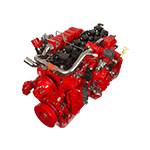Nov . 29, 2024 21:34 Back to list
rear brake drum replacement
Rear Brake Drum Replacement A Comprehensive Guide
Maintaining your vehicle’s braking system is critical for safety and performance. One essential component of the braking system in many vehicles, especially those with drum brakes, is the rear brake drum. Over time, these drums can wear out due to heat, friction, and contamination, leading to reduced braking efficiency. This article will guide you through the process of rear brake drum replacement, ensuring your vehicle remains safe and reliable.
Understanding Brake Drums
Brake drums are circular metal components that encase the brake shoes. When you apply the brakes, hydraulic pressure forces the brake shoes against the inner surface of the drum, creating friction that slows down your vehicle. Signs of worn brake drums include vibrations while braking, unusual noises, and a warning light on the dashboard. If you notice these symptoms, it might be time to replace your rear brake drums.
Tools and Materials Needed
To replace your rear brake drums, you will need the following tools and materials
- Socket set and wrenches - Brake drum puller (optional, but recommended) - New brake drums - New brake shoes (if required) - Brake cleaner - Lubricant (high-temperature brake grease) - Clean rags - Safety glasses and gloves - Jack and jack stands
Step-by-Step Replacement Process
1. Safety First Before starting, park your vehicle on a flat surface and engage the parking brake. Wear safety glasses and gloves to protect yourself during the process.
2. Loosen the Lug Nuts Use a lug wrench to slightly loosen the lug nuts on the rear wheels while the vehicle is on the ground. Do not remove them completely yet.
rear brake drum replacement

3. Lift the Vehicle Use a jack to lift the rear of the vehicle, then secure it with jack stands to ensure stability. Once secure, you can remove the lug nuts and take off the rear wheels.
4. Remove the Brake Drum Examine the brake drum for any retaining screws. If present, remove them. If the drum is stuck due to rust or debris, use a brake drum puller to gently pry it off. Be cautious not to damage the backing plate or the wheel cylinder.
5. Inspect the Brake Shoes and Components Once the drum is removed, inspect the brake shoes, springs, and other components for wear and damage. If the brake shoes are worn down, it’s a good idea to replace them simultaneously.
6. Clean the Area Before installing the new drum, clean the hub and backing plate using brake cleaner. Remove any dust or debris to ensure a proper fit and function.
7. Install New Brake Shoes (if necessary) If you are replacing the brake shoes, now is the time to do it. Follow the manufacturer’s directions to install the new shoes, ensuring all springs and clips are properly attached.
8. Install the New Brake Drum Carefully slide the new brake drum over the brake shoes. Ensure it fits snugly without forcing it. If the drum doesn’t slide on easily, recheck the shoe installation.
9. Reattach the Wheel Once the brake drum is in place, reattach the wheel and hand-tighten the lug nuts. Lower the vehicle back to the ground and then use a torque wrench to tighten the lug nuts to the manufacturer’s specifications.
10. Test the Brakes Before driving your vehicle, pump the brake pedal a few times to ensure proper contact between the brake shoes and the drum. Test the brakes in a safe area to confirm everything is functioning correctly.
Conclusion
Replacing rear brake drums is an essential maintenance task that can enhance your vehicle’s safety and performance. By following this step-by-step guide, you can replace your rear brake drums effectively and confidently. Remember, if at any point you feel uncertain about the process, consult a professional mechanic for assistance. Safe driving starts with well-maintained brakes!
-
[Product ]-[Company Name]|[Core Function 1]&[Core Function 2]
NewsJul.22,2025
-
HINO Advanced Machinery Solutions - LONGYAO COUNTY YIHANG MACHINERY | Industrial Efficiency&Customization
NewsJul.21,2025
-
HINO Machinery Solutions - LONGYAO COUNTY YIHANG MACHINERY MANUFACTURING CO.LTD | Precision Engineering, Customizable Configurations
NewsJul.21,2025
-
HINO Machinery Solutions - LONGYAO COUNTY YIHANG MACHINERY MANUFACTURING CO.LTD | Precision Engineering, Customizable Configurations
NewsJul.21,2025
-
HINO Machinery Solutions - LONGYAO COUNTY YIHANG MACHINERY MANUFACTURING CO.LTD | Precision Engineering, Customizable Configurations
NewsJul.21,2025
-
HINO Industrial Solutions|Precision Engineering&Energy Efficiency
NewsJul.21,2025
